
| Publisher: | St. Martin's Griffin | |
| Genre: | Women, General, Fiction, Historical | |
| ISBN: | 9781250169761 | |
| Pub Date: | July 2018 | |
| Price: | $16.99 |
| Fiction |
by Susie Orman Schnall
In 1949 in New York City, Charlotte hopes to become an advertising girl. But her father is forcing her to drop out of college and start working in the Brooklyn family store. Her boyfriend, Sam, is pressuring her just to settle down and get married. When she hears the "Miss Subways" campaign is looking for a new face, Charlotte puts in her name on a whim. To her astonishment, she's chosen as one of the finalists, with a chance to be advertised all over the city's subway cars. She is sure that this is what she needs to change her life, if only she can become Miss Subways.
In 2018, Olivia works in advertising and is in despair. She's kind of in love with her boss, and their small firm is in danger of folding if they don't attract a new, large client. Determined to succeed, partly to save the firm, and partly to attract Matt, Olivia throws everything into a proposal for the MTA. Intrigued by the historical Miss Subways campaign, Olivia begins to research it in the hopes of creating a retro advertising blitz, only to discover a Miss Subways connection much closer to home than she expected.
Compelling and inspired by the real Miss Subways campaign, The Subway Girls explores love, ambition and how women in every age struggle to balance careers with their lives. Susie Orman Schnall (On Grace, The Balance Project) has created a novel with alternating historical and contemporary plotlines that is sure to appeal to fans of Beatriz Williams and Lauren Willig. --Jessica Howard, bookseller at Bookmans, Tucson, Ariz.

| Publisher: | Grove Press | |
| Genre: | General, Literary, Fiction, Historical | |
| ISBN: | 9780802128171 | |
| Pub Date: | July 2018 | |
| Price: | $26 |
| Fiction |
by Kent Wascom
The third in a series of four historical novels, Kent Wascom's The New Inheritors is about the building, and curdling, of love. Set mostly on the American Gulf Coast from the late 1800s to the end of the First World War, the book is a lonely meditation on how humans come together and inevitably fall apart, whether through the simple passage of time or their own hubris.
Adopted at a young age, Isaac Patterson grows up along the gulf, learning to depict nature through art as he spends most of his time outdoors. After dropping out of art school and moving back in with his parents, he begins a relationship with Kemper Woolsack, daughter to his family's neighbors and inheritor to a modest fortune in the fruit trade. Her parents, Joseph and Marina, were the protagonists of Wascom's previous novel, Secessia, though The New Inheritors doesn't require readers to know that story to be invested in Kemper and Isaac's growing entanglements. Complicating everything are Kemper's two brothers, Angel and Red, whose growing animosity mimics the larger conflict happening across the world at the outbreak of World War I.
Wascom charts the destruction of the Woolsack clan alongside Kemper and Isaac setting up a life for themselves, showing how generations shift the nature of what it means to be a family. The romanticism he conjures up in the latter is heavily tempered by the former, creating a novel where violence and beauty butt up against each other in fascinating ways. --Noah Cruickshank, adult engagement manager, the Field Museum, Chicago, Ill.
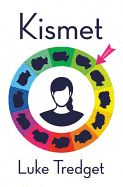
| Publisher: | Little, Brown | |
| Genre: | Women, Romantic Comedy, Humorous, General, Romance, Literary, Coming of Age, Fiction | |
| ISBN: | 9780316418294 | |
| Pub Date: | August 2018 | |
| Price: | $26 |
| Fiction |
by Luke Tredget
Luke Tredget's perceptive debut novel, Kismet, features upwardly mobile, post-college Londoners employing a wildly popular matchmaking app called Kismet to meet potential romantic partners. Anna is a journalist dissatisfied with her job at a media company. On the cusp of turning 30, it feels like a seminal moment in her life. She wonders if her live-in boyfriend, Pete, is "the one" or whether someone better matched for her is still out there. So she logs on to Kismet.
Spanning the nine eventful days leading up to Anna's birthday, Kismet explores the implications of a world in which a powerful social media company has access to all of its subscribers' data. The matchmaking app knows which websites Anna visits and is continually compiling and sifting data on the playlists she creates, the items she buys, the pictures she likes and the people she befriends. Anna seems unconcerned with granting Kismet access to so much private information; she is far more preoccupied with maintaining an attractive online persona. Thus she avoids visiting websites that might label her as boring or unintelligent on Kismet's algorithms.
Why give a corporation access to that much personal data? The answer lies in Kismet's clever seduction: it peddles in hopes, dreams and insecurities to promote the notion that one's true soulmate or a better romantic match could be out there, just a click away, so why settle for less? With multiple plot twists and vivid descriptions of London life, Kismet is timely, entertaining and possibly even a predictor of the next big thing in social media. --Shahina Piyarali, writer and freelance reviewer
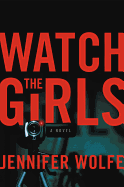
| Publisher: | Grand Central | |
| Genre: | Women, Psychological, Mystery & Detective, Amateur Sleuth, Suspense, Gothic, Thrillers, Fiction | |
| ISBN: | 9781538760840 | |
| Pub Date: | July 2018 | |
| Price: | $26 |
| Starred | Mystery & Thriller |
by Jennifer Wolfe
One can't help but become ensnared by Watch the Girls even before the first chapter opens. Starting with Jennifer Wolfe's dedication to her agent, "for liking it weird," followed by a John Updike quote, "Celebrity is a mask that eats into the face," Wolfe's nods to the odd are spot on, and the creepiness of the thriller is utterly engrossing.
Fifteen years after her youngest sister's disappearance, former teen star Olivia Hill (now Liv Hendricks) has distanced herself from her family, been fired from the Scooby-Doo-esque reality mystery show Bullsh?t Hunters and crowdfunded her own web series to explore unsolved mysteries. This lands her in the small central California town of Stone's Throw, secretly hired by local horror film auteur Jonas Kron to investigate the disappearance of several young blonde women from aptly named Dark Road just outside of town. The secluded mountain village is as quaint as it is bizarre; home to apple orchards, a film festival, a wolf sanctuary and the lore of the Ulv Konge ("Wolf King"), a nightmarish creature created by Kron.
Wolfe, who also writes YA as Jennifer Bosworth (Struck), twists together a wide spectrum of themes on an action-packed track through Crazy Town. With dark woods, missing women, eccentric locals, unsettling wolf masks, secret messages and nighttime stalkers, Watch the Girls has all the nightmare fuel of great horror movie camp mixed with an absorbing mystery. Although it strays into implausibility as Liv's past timeline converges with her present, there is no denying Girls is "nervously-eat-an-entire-box-of-cookies-without-realizing-it" good. --Lauren O'Brien of Malcolm Avenue Review

| Publisher: | Little, Brown | |
| Genre: | Psychological, Women, Crime, Suspense, Thrillers, Fiction | |
| ISBN: | 9780316547185 | |
| Pub Date: | July 2018 | |
| Price: | $27 |
| Starred | Mystery & Thriller |
by Megan Abbott
Two ambitious post-doc scientists share a deadly secret in Edgar Award-winning crime writer Megan Abbott's Give Me Your Hand. That secret breeds more secrets while Kit Owens and Diane Fleming vie for professional kudos as investigators under the renowned Dr. Lena Severin. During high school, Kit and Diane shared difficult family home lives but were fierce academic and athletic competitors. Although they followed divergent paths to undergraduate scholarships, Ph.D.s and prestigious lab assignments, they get thrown together again as collaborators on Severin's studies of Premenstrual Dysphoric Disorder (PMDD). Severin is determined to discover the biological genesis of that "purple marrow of female rage." Kit would kill to work for her idol Severin, whom she pictures with a "mouth like a razor, brain like a god's, and ion pump where her heart should be." And kill she does--or doesn't she?
The increasingly lauded Abbott (You Will Know Me) leans toward edgy, complex female characters elbowing their ways into positions of knowledge and influence. Vacillating between self-doubt and inordinate pride, between social reticence and professional excess, Kit is driven to succeed even if that means crossing a few lines, compromising professed values or revealing secrets shared in confidence. After a night of too many Long Island Iced Teas, she beds another lab tech and gives away more about Diane's past than she means to--or was that her intent? As Severin's lab begins to flow with more human blood than that of research mice, it becomes the site of study that goes beyond "the whole rickety biological pathophysiology of women." --Bruce Jacobs, founding partner, Watermark Books & Cafe, Wichita, Kan.
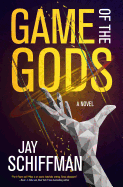
| Publisher: | Tor | |
| Genre: | Dystopian, Political, Fiction, Action & Adventure, Science Fiction, Military | |
| ISBN: | 9780765389541 | |
| Pub Date: | July 2018 | |
| Price: | $28.99 |
| Science Fiction & Fantasy |
by Jay Schiffman
On a distant future Earth, a nation called the Federacy keeps its citizenship closely guarded. This high-tech, low-freedom polity uses Judges to decree who is worthy of living in the Federacy and who will be cast to its dangerous, war-torn borders. Maxomillion Cone is the Federacy's highest-ranking Judge, a former soldier who carries out his grim duties despite longing for a quiet life, and harboring hatred for the men in his government who made that life impossible by essentially lobotomizing his wife. When a fellow Judge shows Max a foreign device that can supposedly tell the future, it starts a chain reaction that may cause the end of the world.
Game of the Gods, Jay Schiffman's debut, is as much an action-thriller as a science-fiction novel. Max Cone is propelled on a globe-spanning adventure across a somewhat recognizable but still strange Earth. What Schiffman's writing lacks in in-depth world-building is compensated for by a propulsive plot and intriguing visions of far-future geopolitics. The Federacy is at war with the National Freedom Force on one border and the Rogues on the other. Across the Atlantique Ocean, the Nation of Yerusalom, led by its sinister Holy Father, is a dubious ally. Max meets a motley crew among these nations and more, all of whom are caught in a plot concerning the future of humanity and the nature of divinity. Game of the Gods is an entertaining journey at a blistering pace, with hints of Judge Dredd, the X-Men and other sci-fi staples. --Tobias Mutter, freelance reviewer
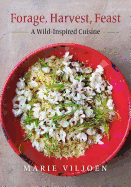
| Publisher: | Chelsea Green | |
| Genre: | Nature, Cooking, Vegetables, Professional, Gardening, General, Specific Ingredients, Seasonal, Plants, Natural Foods, Methods | |
| ISBN: | 9781603587501 | |
| Pub Date: | August 2018 | |
| Price: | $40 |
| Food & Wine |
by Marie Viljoen
Wild foods have become popular in the high end of the food world; locally found wild ingredients appear in many farmers markets, chef's menus and cookbooks. Marie Viljoen is a garden designer, forager and cook raised in South Africa and living in Brooklyn, N.Y. In Forage, Harvest, Feast, she offers more than 400 recipes that center on the wild foods of the northeastern U.S. and beyond, and use culinary approaches from all over the world. It is primarily a cookbook, but also offers brief histories of the uses for each plant, foraging tips and cultivation advice for growers.
Chapters are organized by ingredient, such as bayberry, fir and sumac. Each gives the common and botanical names of the plant, an identification photo, advice on where and when to harvest or purchase it, health warnings and some idea of whether it may be cultivated and how it tastes. That section is followed by recipes, in some cases more than 20 of them for one ingredient, including entrees, sides, condiments, baked goods and drinks. These include pork belly, burdock and pickled field garlic curry; fermented honeysuckle cordial; simple serviceberry cakes; and porseleinbredie, a South African stew with lamb, ginger, red chiles and wild purslane. Urbanites will be able to forage many of the plants, as she does around New York City, and she considers those who might be picking in parks and near roadways. A final section organizes the recipes by course and allows readers to identify them as vegan, vegetarian, pescatarian and omnivorous. Home cooks, gardeners and food professionals will find many interesting new flavors and ideas here. --Sara Catterall
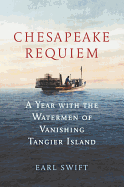
| Publisher: | Dey Street | |
| Genre: | Technology & Engineering, Nature, Photography, Ecosystems & Habitats, Coastal Regions & Shorelines, United States, Subjects & Themes, Lifestyles, History, State & Local - Middle Atlantic, Fisheries & Aquaculture | |
| ISBN: | 9780062661395 | |
| Pub Date: | August 2018 | |
| Price: | $28.99 |
| History |
by Earl Swift
Located off the coast of Virginia in Chesapeake Bay, Tangier is a tiny island, home to fewer than 1,000 residents, most of whom make their living by catching the delicious blue crab that makes this part of the ocean its home. For Chesapeake Requiem, journalist Earl Swift spent a year living with the islanders. He expertly combines their personal stories with the long history of the region and a comprehensive analysis of the life cycle of the blue crab. He provides readers with an entertaining and informative story of a place that in 20 years will no longer exist; Tangier is steadily eroding, losing 15 feet or more of shoreline each year due to the slow and inevitable rise of the ocean. Several islands near Tangier, which used to be inhabited, have already disappeared under the waves.
The men and women who make their living from the sea know their homes will be next unless something is done to stop the erosion. But politics and the brutal nature of the ocean are not easily changed. As older residents die and younger ones leave for the mainland, those who remain cling to their way of life, while knowing that sooner rather than later, it will all come to an end. Swift has created a time capsule for future generations regarding what it was like to live in this unusual location. He has also opened a door to a much-needed discussion: What will the world be like when much of its islands and coastlines are under water? --Lee E. Cart, freelance writer and book reviewer
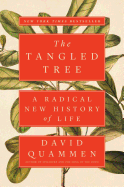
| Publisher: | Simon & Schuster | |
| Genre: | Life Sciences, Genetics & Genomics, Science, Evolution, Biology, Zoology - General | |
| ISBN: | 9781476776620 | |
| Pub Date: | August 2018 | |
| Price: | $30 |
| Science |
by David Quammen
David Quammen (Spillover: Animal Infections and the Next Human Pandemic) is a popular science writer and author of 15 previous books. In The Tangled Tree, he describes recent revolutionary discoveries about the nature of life, evolution and the human race. Gene sharing, for instance, is more complex than we previously believed. The boundaries between species are blurry, to say the least. And we are probably descended from a previously unknown category of microbial life, the archaea. "It's a little like learning, with a jolt, that your great-great-great-grandfather came not from Lithuania but from Mars."
For context, Quammen begins in 1837 with Charles Darwin's familiar tree of life. He summarizes the theory of evolution, and discoveries leading up to the relatively recent field called molecular phylogenetics, "the study of evolutionary relatedness using molecules as evidence." Genes don't just flow from parent to child, he writes, but also "sideways across species boundaries," including species that were previously considered far removed from each other. This phenomenon is called horizontal gene transfer, and it has destroyed the old notion of distinct species neatly arranged on an evolutionary tree. Instead, it gives us a new vision of life as an interwoven thicket of heredity and relationships, with branches that converge in ways that trees limbs never do.
Quammen is an established and skillful science writer, able to convey difficult scientific ideas with the excitement of their discovery. He balances the technical details with vivid anecdotes, humor and casual charm. This is a serious and entertaining book that will fascinate anyone interested in the history and nature of life. --Sara Catterall
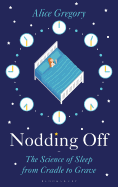
| Publisher: | Bloomsbury Sigma | |
| Genre: | Life Sciences, Family & Relationships, Parenting, Psychology, Science, Health & Fitness, General, Human Anatomy & Physiology, Longevity, Neuropsychology, Children's Health, Sleep & Sleep Disorders | |
| ISBN: | 9781472946188 | |
| Pub Date: | August 2018 | |
| Price: | $28 |
| Science |
by Alice Gregory
British sleep researcher Alice Gregory shares her extensive knowledge and passion for the science of sleep in Nodding Off. She begins with her own story: as a sleep-deprived psychiatry student at Oxford University, Gregory was deeply affected by a lecture by an American psychology professor who stressed how "slumber is essential to our waking existence" and how often the importance of sleep is underestimated.
This experience encouraged Gregory to examine closely why so little was/is known about sleep, a universal, "mysterious pastime." Gregory probes the elusive question of "what is sleep?" by explaining processes that control sleep and wakefulness and what happens to the body, scientifically, when one slumbers. Nodding Off covers all bases and is laden with technical information woven with examples of sleeping trials and red flags. The addition of interesting facts and trivia--such as how dolphins sleep half their brains at a time as they continue to move about--adds levity to the presentation. Gregory chronicles, in depth, the nature of sleep and challenges faced over a lifetime.
Sleep--or lack thereof--also has a direct effect on marriages, pregnancy, parenthood, menopause and old age. Insomnia and sleep deprivation have become an epidemic that complicates relationships and finances, and can even lead to physical disease, mental health problems and death. Gregory's expert perspective offers hope, though. Well-drawn, thoroughly sourced case studies and scenarios outline excellent strategies and commonsense tips for combating problems and getting better sleep. --Kathleen Gerard, blogger at Reading Between the Lines
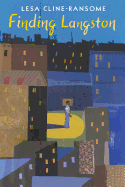
| Publisher: | Holiday House | |
| Genre: | Bullying, People & Places, United States - African-American, United States - 20th Century, Social Themes, Books & Libraries, New Experience, Juvenile Fiction, Historical | |
| ISBN: | 9780823439607 | |
| Pub Date: | August 2018 | |
| Price: | $16.99 |
| Starred | Children's & Young Adult |
by Lesa Cline-Ransome
After 11-year-old Langston's mother died, he and his father packed up their few belongings and headed north, hoping, as his daddy said, for a "chance for something better." Langston's new home in post-World War II Chicago's "Black Belt" is nothing like his old home in rural Alabama, and Langston's junior high is filled with kids who call him "country boy" and laugh at the overalls and "run-over" shoes he wears. But, like it or not, Chicago is home now. Langston aches for his mama and feels that he barely even knows his now-quiet father.
It's not until Langston stumbles upon the neighborhood library when trying to get away from bullying boys that he finds a refuge--both in the cool, airy building and in the poems of a poet he discovers. Not only does the poet--Langston Hughes--share his first name, but when Langston reads Hughes's poems, it "[f]eels like reading words from [his own] heart." As he devours Hughes's poems, he begins to find his own voice, finally opening up to his daddy about why he loves reading, and this poet in particular: "[H]e writes poems about being a Negro and living up north but missing the South and feeling lonely."
Lesa Cline-Ransome has written many picture books (Before She Was Harriet; Freedom's School) but the winsome Finding Langston is her first novel. Here, she explores the midpoint of what is known as the Great Migration, a 50-year period when more than seven million black people left the South "in search of a better life in the North," expanding Chicago's black population from 2% to 33%. Finding Langston is about cultural heritage and personal growth and, at its heart, about finding home wherever you land. --Emilie Coulter, freelance writer and editor

| Publisher: | Abrams Comic Arts | |
| Genre: | Young Adult Nonfiction, Social Topics, Comics & Graphic Novels | |
| ISBN: | 9781419728549 | |
| Pub Date: | August 2018 | |
| Price: | $19.99 |
| Children's & Young Adult |
by Duncan Tonatiuh
Undocumented: A Worker's Fight is a timely, interactive work of art meant to catch the eye of older readers, with a pull-out, accordion-fold format that refers back to ancient Mixtec codices.
"You don't know our names but you've seen us. In this country we build houses, we harvest crops, we cook, we clean, and we raise children. Some people want to kick us out and some act like we don't exist, but we are here, compañeros."
Juan was born in a small village in Mexico where the spoken language isn't Spanish, but Mixteco. Before Juan turned 18, he made two trips across the United States/Mexico border. The first time, the migras caught him and beat him. Duncan Tonatiuh's accompanying illustration is dark, depicting Juan being beaten bloody by a group of identical, white border patrol agents. The second time, Juan made it across and was brought to "a strange city."
Juan finds a job in a restaurant where he works "for years--twelve hours a day, seven days a week." His boss tells Juan that he is doing him a favor, hiring him without any paperwork. But, eventually, thanks to the nudging of a Chinese coworker, he realizes that the boss is actually taking advantage of him. "[I]t's not fair," the coworker says to Juan, "that they are paying us so little.... We work hard. We deserve to be paid right!"
What follows is the difficult, frustrating, tedious path undocumented workers must often take in order to receive acceptable wages: a legal counselor gets involved and the restaurant's undocumented workers take a stand. Undocumented, featuring multi-award winning author/illustrator Tonatiuh's (The Princess and the Warrior) vibrant, stylized illustrations, is an all-too-real discussion about fair pay and the hostility U.S. citizens often display toward undocumented immigrants. --Siân Gaetano, children's and YA editor
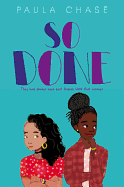
| Publisher: | Greenwillow Books | |
| Genre: | Friendship, Adolescence, People & Places, Dance, United States - African-American, Lifestyles, Social Themes, City & Town Life, Juvenile Fiction, Performing Arts | |
| ISBN: | 9780062691781 | |
| Pub Date: | August 2018 | |
| Price: | $16.99 |
| Children's & Young Adult |
by Paula Chase
With So Done, Paula Chase (Flipping the Script) perfectly captures the challenges black girls face as they tentatively begin their transition to becoming young women. It's the final weeks of summer, and an unspeakable incident hovers over best friends Tai and Mila. Their neighborhood, the Cove, is a community populated mainly by black and brown people, where the social order among young people is strict and money is always tight. The threat of drugs and violence is present but not overwhelming, more a part of the ambience of the Cove than an active danger.
Tai and Mila navigate the turbulent waters of tweenhood while trying to balance their looming secret, widening friend pools and their uncertainty about whether they will be friends or foes in the new school year. There is also news that a talented and gifted program will be starting in their neighborhood, further straining the already tense relationship between the girls as their friend group feels the stirrings of competition.
Chase presents genuine characters whose interactions are authentic; the tweens express their true feelings in conversations and fights that don't feel petty or overly dramatic. She does not flinch in her determination to examine subjects that are difficult to discuss (and sometimes ignored) in middle-grade works, including drug abuse and sexual misconduct. But her characters are not victimized and voiceless--they are given righteous anger, strength and the benefit of the doubt. So Done excellently embodies the experience of young, black girls and the stress and triumphs of striving to be an individual in a community that respects sticking together above all else. --Breanna J. McDaniel, author, freelance reviewer